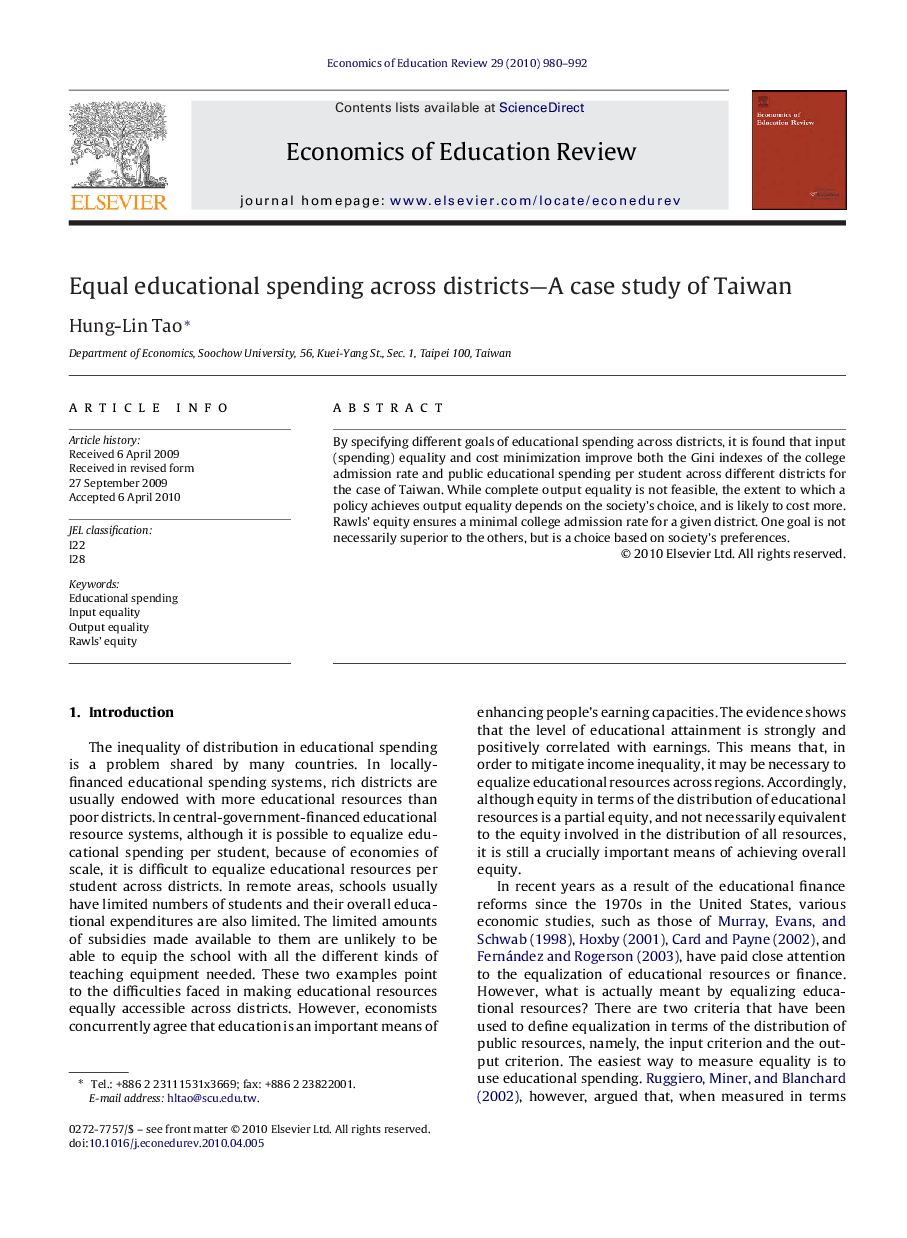| Article ID | Journal | Published Year | Pages | File Type |
|---|---|---|---|---|
| 354570 | Economics of Education Review | 2010 | 13 Pages |
Abstract
By specifying different goals of educational spending across districts, it is found that input (spending) equality and cost minimization improve both the Gini indexes of the college admission rate and public educational spending per student across different districts for the case of Taiwan. While complete output equality is not feasible, the extent to which a policy achieves output equality depends on the society's choice, and is likely to cost more. Rawls’ equity ensures a minimal college admission rate for a given district. One goal is not necessarily superior to the others, but is a choice based on society's preferences.
Keywords
Related Topics
Social Sciences and Humanities
Economics, Econometrics and Finance
Economics and Econometrics
Authors
Hung-Lin Tao,
